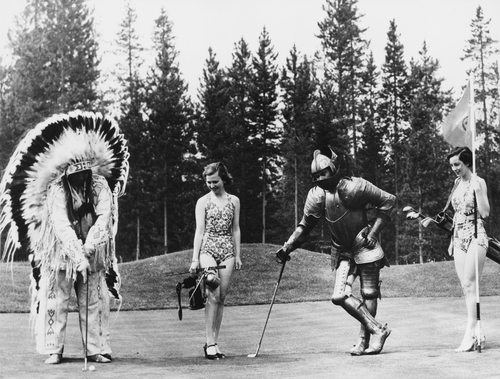Unseen Dangers of Positive Stereotyping
This is one of our free-to-access content pieces. To gain access to all Ideas for Leaders content please Log In Here or if you are not already a Subscriber then Subscribe Here.

Executives and human resource managers are always on the lookout for demeaning language and negative stereotyping, realizing that any pejorative phrase tinged with racist or other discriminatory connotation is offensive, creates a hostile work environment, undermines the culture of the company, and can eventually lead to expensive litigation.
But what of supposedly ‘inoffensive’ positive stereotypes — joking, for instance, that blacks are more athletic (an all-too common example)? Research by professor Aaron Kay of Duke University’s Fuqua School of Business reveals that positive stereotyping can be just as damaging as negative stereotyping… and is perhaps even worse.
Executives and managers recognize today that discrimination has no place in the workplace. No employee should be required to work in an environment of abuse and harassment — including in the form of overhearing derogatory comments about his or her race, nationality or another other specific demographic. Discrimination is not just wrong for moral reasons, but can also destroy employee engagement, undermine collaboration and teamwork, and also lead to serious human resource problems for the company: Any manager who displays his ignorance by declaring that “they” — whatever race or background “they” may be — are all lazy or unreliable is laying the groundwork for an employee discrimination lawsuit the next time that a member of the demographic group targeted in the comment is laid off or fired. For all these reasons, today’s best businesses operate under a no-tolerance policy for discriminatory language and behavior.
However, discriminatory language is usually defined as negative stereotyping; a positive comment about a certain race or national background may not be deemed to be discriminatory since it is, after all, complementary. Experiments by professor Aaron Kay of Duke University’s Fuqua School of Business and his research colleagues demonstrates conclusively that tolerance for positive stereotyping can in fact be more damaging to the company, not to mention the mindset and comfort of employees in the referenced demographic, than negative stereotyping.
First and foremost, positive stereotyping is still stereotyping. In other words, according to the research, positive stereotyping affirms the perception that people are different based on their race, national background, gender or even sexual orientation. Positive stereotyping destroys the concept that all people are created equal just as thoroughly as negative stereotyping — but is more dangerous because it’s more insidious. While there may be an almost automatic response when one hears a negative stereotype, Kay, in collaboration with professors Martin Day of Princeton University, Mark Zanna of the University of Waterloo, and David Nussbaum of the University of Chicago, empirically demonstrated that there is often not the same response to a positive stereotypical comment. For example, participants in one experiment were skeptical of a (fictional) article that declared research showed different levels of intelligence based on race, but were much less skeptical of another (again fictional) article that declared blacks were more athletic than whites. Asked about bias, the majority of participants declared that the first article was biased, but not the second.
Tolerance of this differentiation perception will lead to discrimination, the research shows. In a January 2013 article in the Journal of Experimental Social Psychology, entitled “The Insidious (and Ironic) Effects of Positive Stereotypes,” the researchers note that, in their words, “exposure to a positive stereotype led to increased application of prejudicial beliefs.” For example, the researchers demonstrated that exposure to the positive stereotype of black athleticism led to a greater tendency to assign a negative stereotype to members of the black community.
Because positive stereotyping is seemingly innocuous yet insidiously dangerous, the main business application of this research is communication, zero tolerance and vigilance. As the authors state in their Journal of Experimental Social Psychology article, “There is reason to believe that positive stereotypes may be unlikely to set off red flags in observers.” It’s imperative for executives and managers to ensure that in the culture of their companies, positive stereotyping does, indeed, set off red flags. There are several steps that business leaders can take:

Ideas for Leaders is a free-to-access site. If you enjoy our content and find it valuable, please consider subscribing to our Developing Leaders Quarterly publication, this presents academic, business and consultant perspectives on leadership issues in a beautifully produced, small volume delivered to your desk four times a year.

For the less than the price of a coffee a week you can read over 650 summaries of research that cost universities over $1 billion to produce.
Use our Ideas to:
Speak to us on how else you can leverage this content to benefit your organization. info@ideasforleaders.com